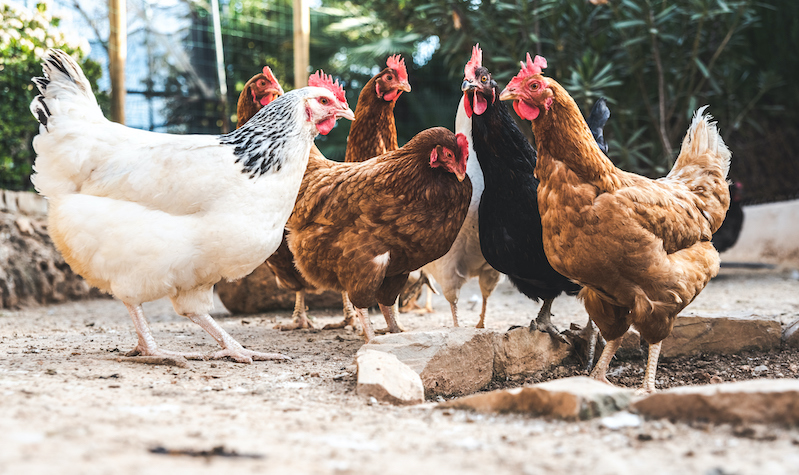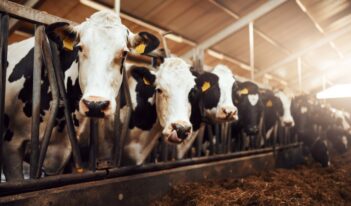
Scholar argues that inconsistent animal welfare labeling practices harm consumers.
Grocery stores throughout the United States carry animal products labeled “humanely raised” and “raised with care.” But do these animal welfare labels tell consumers what they need to know?
In a recent article, Harvard Law School professor Nicole Negowetti suggests that consumer demand can be a powerful tool for changing meat production practices. Inconsistent farm animal welfare standards, however, result in consumer confusion about what animal welfare labels mean and undercut these labels’ potential to improve animal welfare.
Existing legislation requires meat producers to obtain approval from the Food Safety and Inspection Service at the U.S. Department of Agriculture (USDA) before they include animal welfare labels on food product packaging. USDA requires producers to submit written descriptions of their animal raising practices prior to using “humanely raised” labels.
But USDA’s approval process is inadequate, Negowetti argues. She says that USDA relies on information supplied by the producers seeking approval instead of independently verifying producers’ claims. Without independent verification of a producer’s animal welfare practices, USDA can approve labels that are “misleading and deceptive,” Negowetti charges.
For example, USDA approved animal welfare claims in 2010 made by Allen Harim Foods, a poultry producer. Allen Harim Foods then began using the label “Humanely Raised on a Family Farm” on its poultry products. But the Animal Welfare Institute challenged this label at the National Advertising Division of BBB National Programs—formerly the Better Business Bureau—arguing that this label was misleading. The Animal Welfare Institute alleged that Allen Harim Food’s production practices were no better than conventional industry standards for animal welfare.
Despite USDA’s approval of Allen Harim Food’s animal welfare claims, BBB National Programs agreed that removing the welfare label from Allen Harim Food products was “necessary and appropriate.” After BBB National Programs referred this case to the Federal Trade Commission, Allen Harim Foods agreed to remove the misleading language—their chicken packaging now reads “Hand Raised on Family Farms.”
Consumer preferences demand a better method for USDA to designate which products are in fact humanely raised, argues Negowetti. Most consumers indicate that they are “very concerned” about the welfare of farm animals. In addition, consumers perceive that “humanely raised” animal products are higher quality than conventionally sourced products, and many consumers therefore feel that it is worth paying a few extra dollars for meat products sporting a “humanely raised” label.
In response to consumer demand, producers have sought out voluntary, non-governmental certification. A number of third-party organizations now audit farms and certify their animal products as humanely produced. Although Negowetti recognizes that such voluntary labeling programs can do better than government regulation in reflecting fluctuating consumer preferences, she asserts that independent certification programs are far from perfect.
In particular, Negowetti explains that, since different certification programs employ different definitions of “animal welfare,” they do not necessarily promote consumer understanding of animal welfare practices. For example, Animal Welfare Approved standards prohibit alterations like beak trimming, require all animals have pasture access, and require that animals can engage in natural behaviors. In contrast, the American Humane Certified standards allow for alterations without requiring pain relief, do not include an outdoor access requirement, and do not require the accommodation of natural behaviors.
In addition to these inconsistent standards, the gap in farm animal welfare regulation also contributes to consumer confusion about meat labeling. Federal legislation specifically addressing farm animal welfare does not exist, and many state laws that prohibit animal mistreatment exempt common farming practices. This lack of standardization makes it harder for consumers to understand the practices involved in producing animal food products.
Negowetti acknowledges that defining “farm animal welfare” and related concepts can be challenging, as different species of animals have different needs. She argues, however, that this variation in certification standards prevents animal welfare labels from empowering consumers to make informed choices. To inform their choices, consumers need to distinguish between stringent and lax welfare certifications—and this information is never conveyed on a label.
If existing policies and certification schemes are inadequate, what can be done to clarify these labels’ meaning?
One potential solution is to enact federal regulation either establishing standardized animal welfare practices or requiring producers to obtain specific certifications. Although Negowetti concludes that USDA should be involved in promoting transparency and consumer empowerment, she is skeptical of proposals that exclusively call for more government regulation. Both legislation and USDA rulemaking are politically infeasible, she contends. These solutions would be “fraught with special interest battles,” resulting in “watered-down” regulations. Furthermore, federal regulation is less flexible than third-party certification. Enacting federal requirements could prevent animal welfare standards from responding to public concerns.
Instead, third-party certification programs should develop uniform “market-led standards,” and USDA should verify that producers meet those standards. At minimum, USDA-approved labels should demonstrate to consumers that “humane” animal products are produced using superior practices than conventional industry standards. USDA can do so by comparing producer practices to industry standards when evaluating animal welfare claims.
Moreover, Negowetti calls for labels that better communicate the animal welfare standards that certain products satisfy. “Consumer-focused” labels can educate consumers about animal welfare practices generally, in addition to conveying information about specific food products. She hopes that more informative and more uniform labels will empower consumers to purchase products that are consistent with their values and will improve farm animal welfare.



